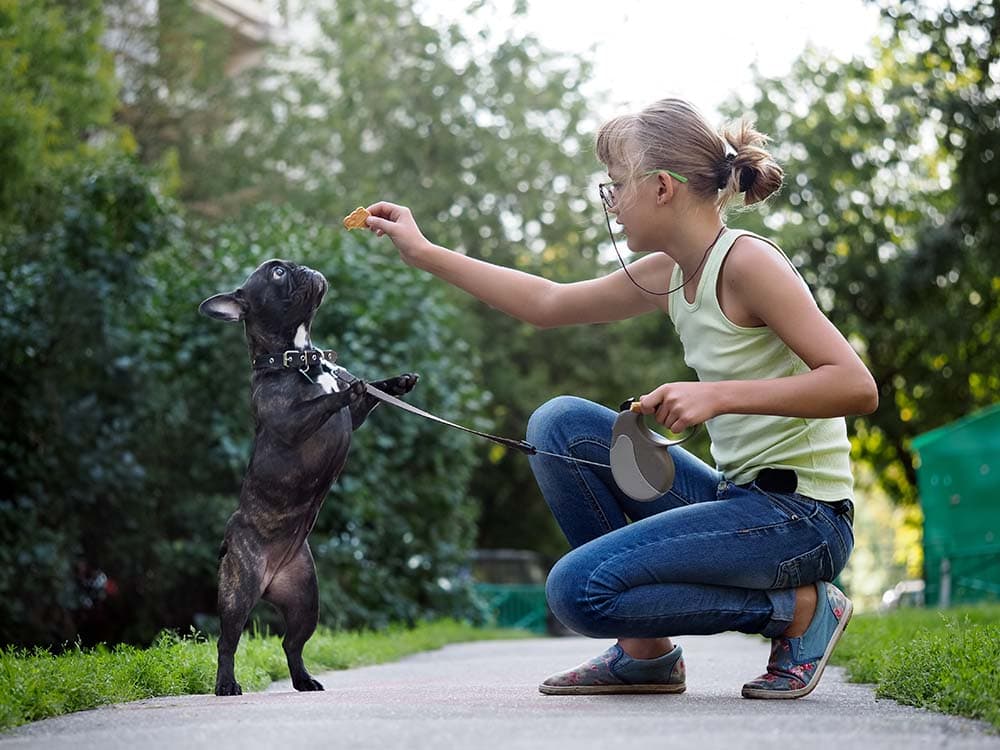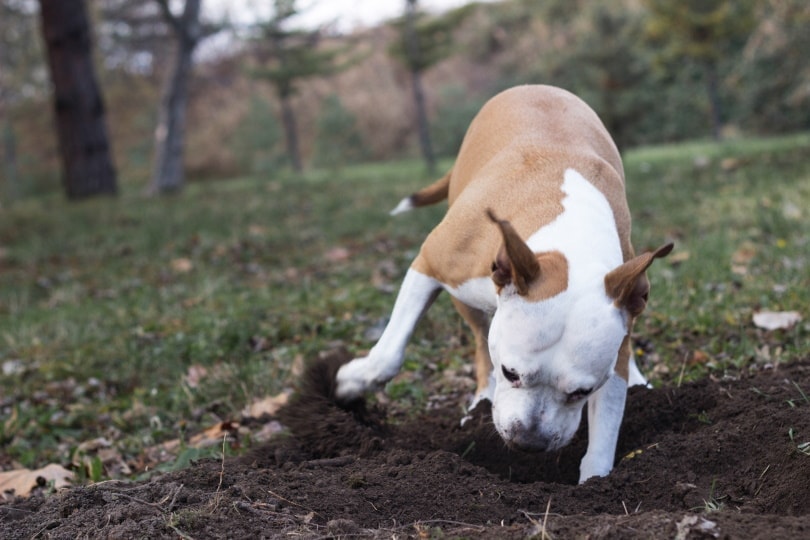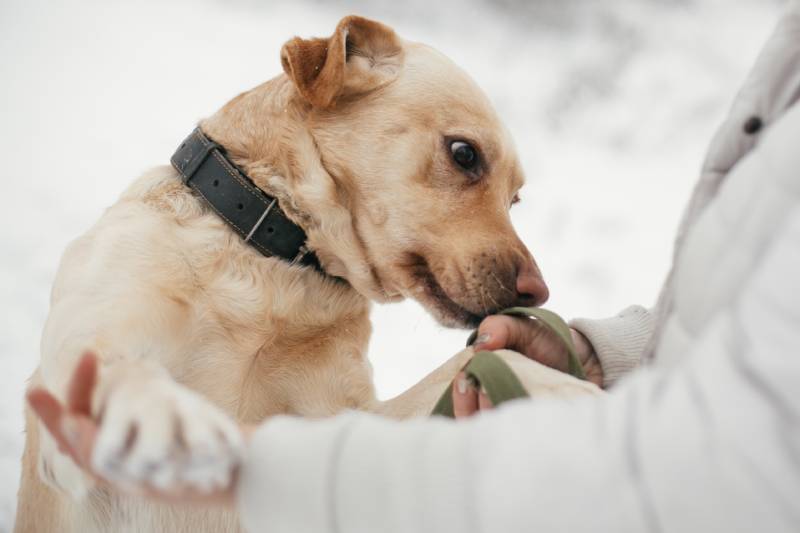How to Get a Puppy to Stop Crying in Their Crate: 6 Expert Tips
By Ashley Bates
Updated on
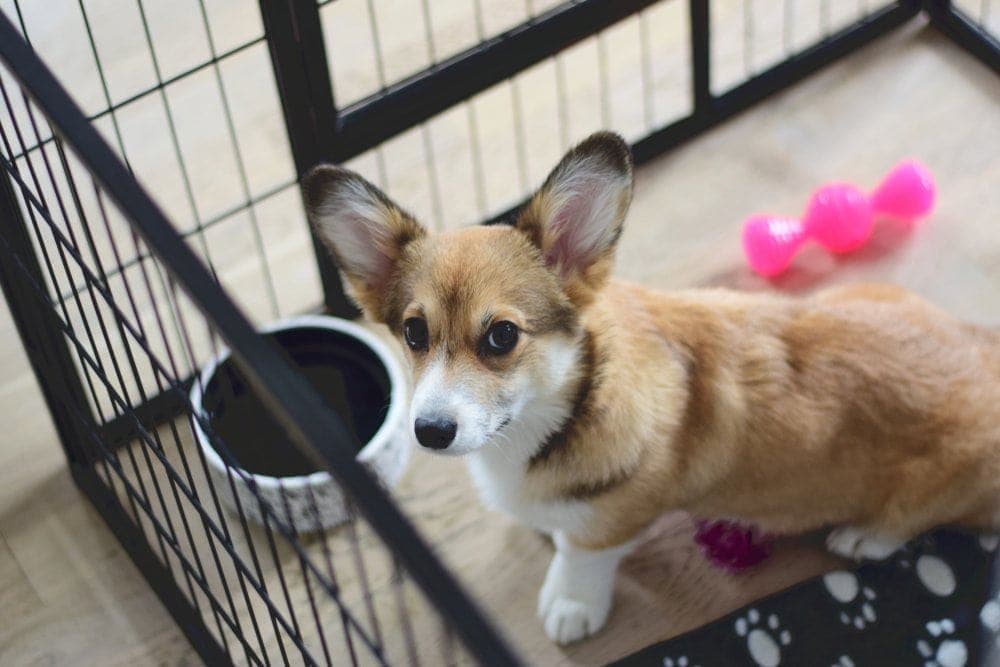
Click to Skip Ahead
Crate training is a part of the puppy process. It is a good way to implement potty training and proper behavior. Plus, when your pup is home alone, it prevents destruction to your property. However, it can definitely have its downsides and requires patience from the owner.
When your puppy is whining in their crate, it can cause some annoyance for listeners and stress for the puppy. So how exactly do you curb whiny tendencies in crated puppies? We will go over some things you can check off the list to make sure.
The 6 Tips to Get a Puppy to Stop Crying in Their Crate
1. Choose the Right Size Crate
Choosing the correct crate size is extremely important for early development. It would help if you always had a crate the size of your puppy, and no bigger or smaller. The crate is not meant to be a comfy, cozy place where they can hang out during the learning phase. Later, you can add comfy beds, but at first, it’s a confinement space for training only.
It is meant to be a temporary placement to prevent in-house accidents or to protect your dog while you’re away. If the crate is too big, a puppy will eliminate inside of it. They won’t want to eliminate inside of a crate that is only big enough for their body.
So this teaches them bladder and bowel control. if the crate is too big, it will give more lenience, making them take advantage of the extra space. While this doesn’t have anything to do with whining inside of the enclosure, it is definitely the reason why size is so important.
If the crate is too small, it can cause your puppy to whine because they don’t have enough space to lay or stand comfortably. So, again, you won’t want a crate that is too big or small – but rather, fits just right.
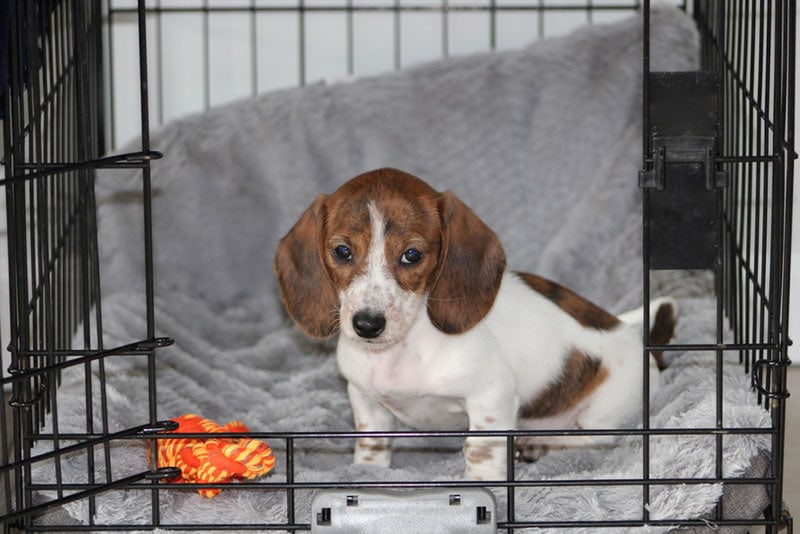
2. Make Sure Puppy Is Acclimated to Crate
Before shoving your puppy in the crate and leaving them to their own devices, you must acclimate them first. Set the cage up and let them sniff around. If you freely allow them to check it out inside and all around safely with you present, they can get used to it faster.
Most generally, every puppy will panic a little when the door latches, especially the first few times. But you should make it as friendly as possible when they are curious and painless as possible when they have to stay inside.
3. Provide Adequate Potty Breaks
Potty breaks are a must! After all, the entire reason why you’re crate training is to make sure your puppy will go to the bathroom outside and not in the home. Often, owners find it worthwhile to set time timers or alerts, so they can take out their dogs on a routine schedule.
If you have no issue pinpointing the minutes that pass by, you might not need to set a timer, but it is a good idea. It would help if you always let out your puppy in relation to how old they are. A very young puppy, for example, cannot hold its bladder as long as an older puppy.
Likewise, a smaller puppy with a little bladder cannot hold their pee as long as a larger breed. So take all of these things into consideration when scheduling your time. You might find that the dog is eliminating in its cage regularly, even with timely potty breaks. You can adjust based on the individual dog if that is the case.
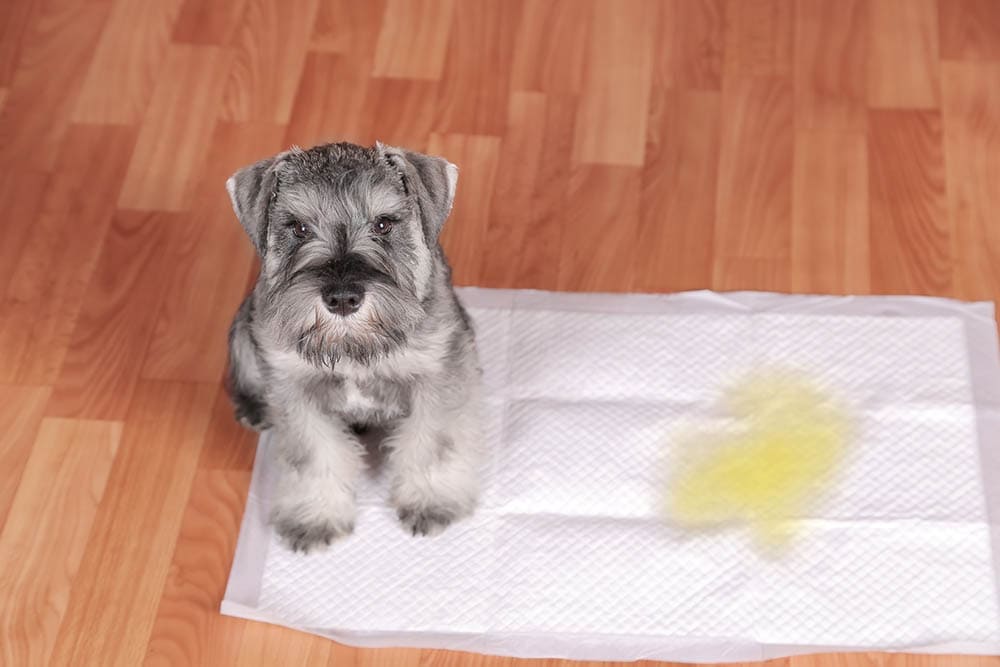
4. Ensure Proper Exercise Outside of Crate
A tired puppy is an easier puppy to train. It’s essential to tucker out your pooch before putting them back in their enclosure. If a puppy is all wound up, it might be whining in an attempt to get out and play.
Every time you get your puppy out of the enclosure to go to the bathroom, it is essential to play or interact with them to get proper mental or physical stimulation. If they are appropriately exercised, they will take the time in their enclosure to relax and maybe even take a nap.
When they are worn out, they might actually enjoy going in their enclosure after a while to unwind. Soon, this will become their comfy spot, one of great security. It’s just going to take a little time!
5. Ignore the Whining
Don’t give into the whining. If your dog starts to recognize that you respond every time they whine, the behavior will not stop. You have to be very careful not to yell, comfort, or interact when they behave this way.
If you do not engage in the behavior, the puppy will have no reward for this action. Eventually, they will give up on trying to get your attention. They will understand that crate time is crate time and learn to relax in the environment.
It might be very hard to learn to stay patient through the process. After all, when you’re watching your favorite TV show or trying to enjoy a family dinner, it can be very distracting to hear a puppy whining throughout the process. But keep in mind that this, too, shall pass.
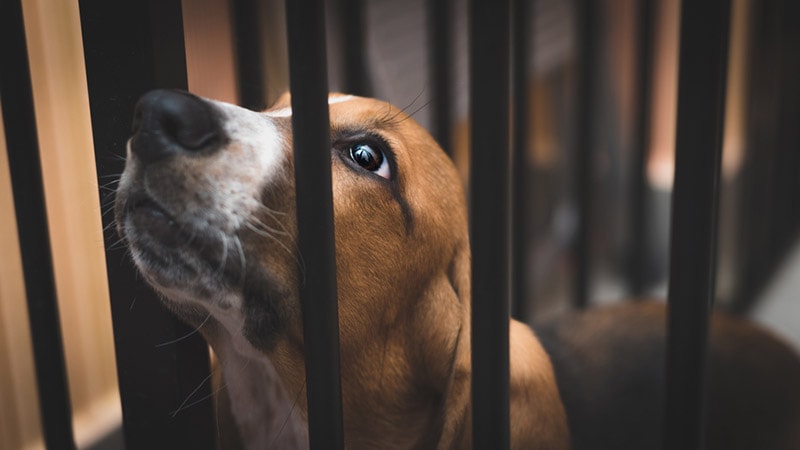
6. Stay Consistent
The biggest thing you must do during this time is stay consistent. You won’t want to mess up the routine by taking the dog out of the enclosure when it whines sometimes and other times not doing so.
If you have an inconsistent response to whining, it can send the wrong signals to your dog and prolong the results that you want. So even when you want to end all of the whining, remember that the more you give in, the longer it will take to end the unwanted behavior.
Why Do Puppies Whine in the Crate?
Puppies whine in the crate to get attention. They don’t want to be locked up; they want their humans to rescue them and let them out. Some puppies will be worse about this than others, so it does depend on the individual dog.
Being in a restrictive environment can warrant different reactions from dog to dog. Some puppies just don’t understand exactly why they have to be confined. Other puppies don’t like being away from their humans. And some puppies just want to play and see what’s happening around the household.
Regardless of the underlying reason, no puppy likes to be cooped up. But this type of training is critical anytime you’re away from home. It also is a godsend when it comes to potty training.
So even though it’s sad to hear your puppy whining in the crate, eventually, they will get used to it, and all will be well.
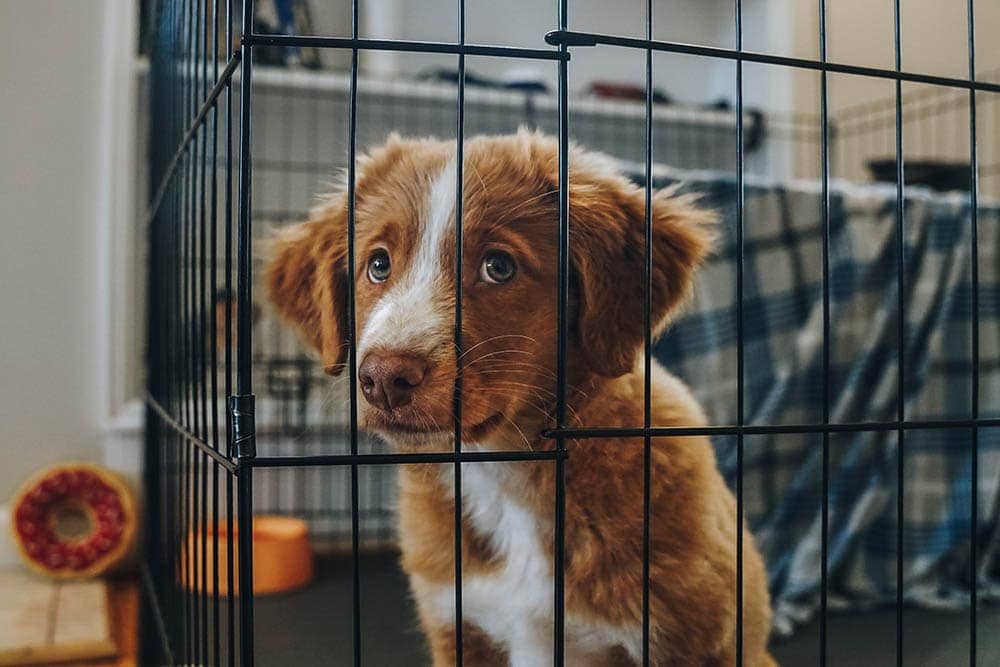
 Dealing with Separation Anxiety
Dealing with Separation Anxiety
Separation anxiety can be tough to manage. Dogs with separation anxiety are much more likely to show anxious behaviors, especially when confined. You might notice excessive barking, whining, and erratic behavior, such as trying to tear up the cage.
Dogs with separation anxiety might also pee or poop in the enclosure due to loss of bladder or bowel control from stimulation.
Calming Supplements
You can buy calming supplements at any pet shop or online. These supplements are designed to soothe your puppy so that they relax without being frantic.
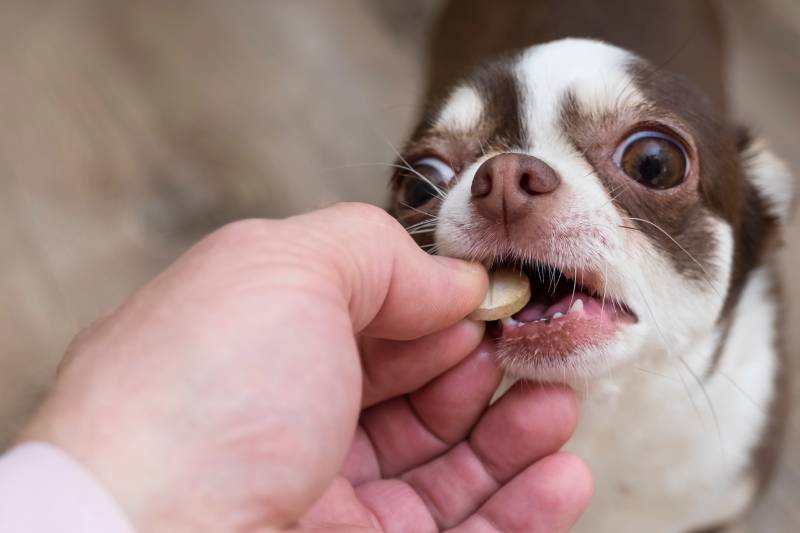
Vet-Prescribed Sedatives
If your dog has extreme anxiety, sometimes over-the-counter medications just won’t help. Your vet will assess your dog’s temperament and condition to advise on potentially stronger medications to calm them while in the crate.
Well-Made Restraints
Cage quality is crucial. If you have a very destructive dog, they can easily break down, chew through, or bend the wire on numerous cages.
Final Thoughts
We know this process feels like it lasts forever. Hearing your little puppy whine in a cage can be disheartening and sometimes even irritating. But remember that they are learning all of this for the first time.
Being in a cage alone, away from human or dog interaction, can be lonely and even a little scary. But during the training process, crate training is essential to care, especially if you’re away from your home for work.
Crate training is also a highly crucial part of potty training. Since it is so important, you should stick to it and follow these tips to ensure crate training success.
Featured Image Credit: Vellicos, Shutterstock

